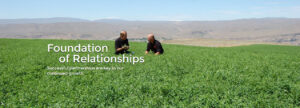Performance Horses Can Be Fed a High-Energy Forage-Only Diet
A horse’s digestive tract is physiologically adapted to continuous intake of a forage-only diet. However, horses are oftentimes fed diets that contain a large percentage of cereal grain-based, high-starch supplements. This is especially true in the case of performance horses that have high energy requirements. These diets typically consist of hay harvested at later stages of maturity that is low in energy and must therefore be supplemented with energy-dense concentrates, sometimes up to 40% of the diet. In contrast, high producing dairy cows are fed hay that is cut at earlier stages of growth and hence contain more energy. Since fiber in forages is broken down into energy-yielding substrates following fermentation by microbes in the equine hindgut, it is conceivable that horses performing at high levels may suffer no ill effects when fed forage-only diets.

Therefore, a group of researchers from Sweden fed a forage-only diet to performance horses and looked at their subsequent metabolic responses and exercise performance. They fed the horses a high-energy forage-only diet (F) or a diet (FC) that contained 50% low-energy forage and 50% high-energy concentrate. Both diets met nutrient requirements for horses in performance training and contained the same amounts of energy (calories) and protein. All horses were in an intensive training program. To determine if the metabolic responses of horses fed the different diets were affected, blood samples were collected before, during, and after exercise on a treadmill. Muscle biopsies were also collected before and after exercise to determine effects of diet on glycogen (energy) stores.
Results showed that body condition was unaffected by diet. Moreover, physiological responses such as heart rate, breathing frequency, and rectal temperature were not different between horses fed either diet. However, horses fed diet F weighed more and consumed more water than horses fed diet FC. Metabolic responses were altered in horses fed the forage-only diet.
Concentrations of acetate in blood plasma were increased in horses fed F, which was not surprising because the higher fiber intake associated with the forage-only diet resulted in more extensive hindgut fermentation and subsequent production of acetate and other short-chain fatty acids (SCFA). These SCFAs are absorbed from the hindgut and can be used as substrates in tissue metabolism. Specifically, acetate is transformed into a substrate for aerobic energy metabolism in the tricarboxylic acid (TCA) cycle in the muscle.
Concentrations of lactate in the blood were significantly lower after exercise in horses fed F, which is a positive effect. Lactate naturally accumulates in the blood and muscle during exercise, which increases muscle acidity and causes subsequent fatigue. Therefore, lower levels of lactate should indicate greater capacity for exercise.
In addition, horses fed F tended to have higher VLa4, a measure of the speed that the horse was running when blood lactate levels reach 4 mmol/L, or the threshold when anaerobic metabolism begins because aerobic metabolism cannot generate energy fast enough, thereby suggesting that aerobic energy utilization was improved when horses were fed F.
Blood pH, a measure of the acidity or alkalinity of the blood, was also higher, or more alkaline, in horses fed F. Acidosis, typically induced after intense exercise such as a race, can be counteracted by administration of oral bicarbonate salts. Results from the Swedish study suggest that the alkalizing effect of a high-energy forage-only diet may naturally neutralize acidosis caused by intense exercise.
Lower muscle glycogen both before and after exercise was perhaps the only negative effect of feeding diet F. Lower levels of water soluble carbohydrates (sugars) in F compared to FC may have affected glycogen synthesis. However, total glycogen depletion during exercise was the same in horses fed either diet, indicating that the energy usage efficiencies were the same in horses fed either diet.
In conclusion, hardworking horses can be fed a 100% forage diet as long as it contains a high level of energy. Early-bloom alfalfa is rich in energy and is an excellent choice for a high-energy forage-only diet. While the metabolic responses of horses fed a forage-only diet were altered, none of these changes were negative, except for lower muscle glycogen stores, and some may actually have positive effects on performance of horses undergoing intense exercise.
Read more about Alfalfa hay and Horse health from Anderson Hay on our blog. Subscribe to this blog via email above on the right.
Reference
Jansson, A. and J.E. Lindberg. (2012). A forage-only diet alters the metabolic response of horses in training. Animal. 6:1939-1946.


